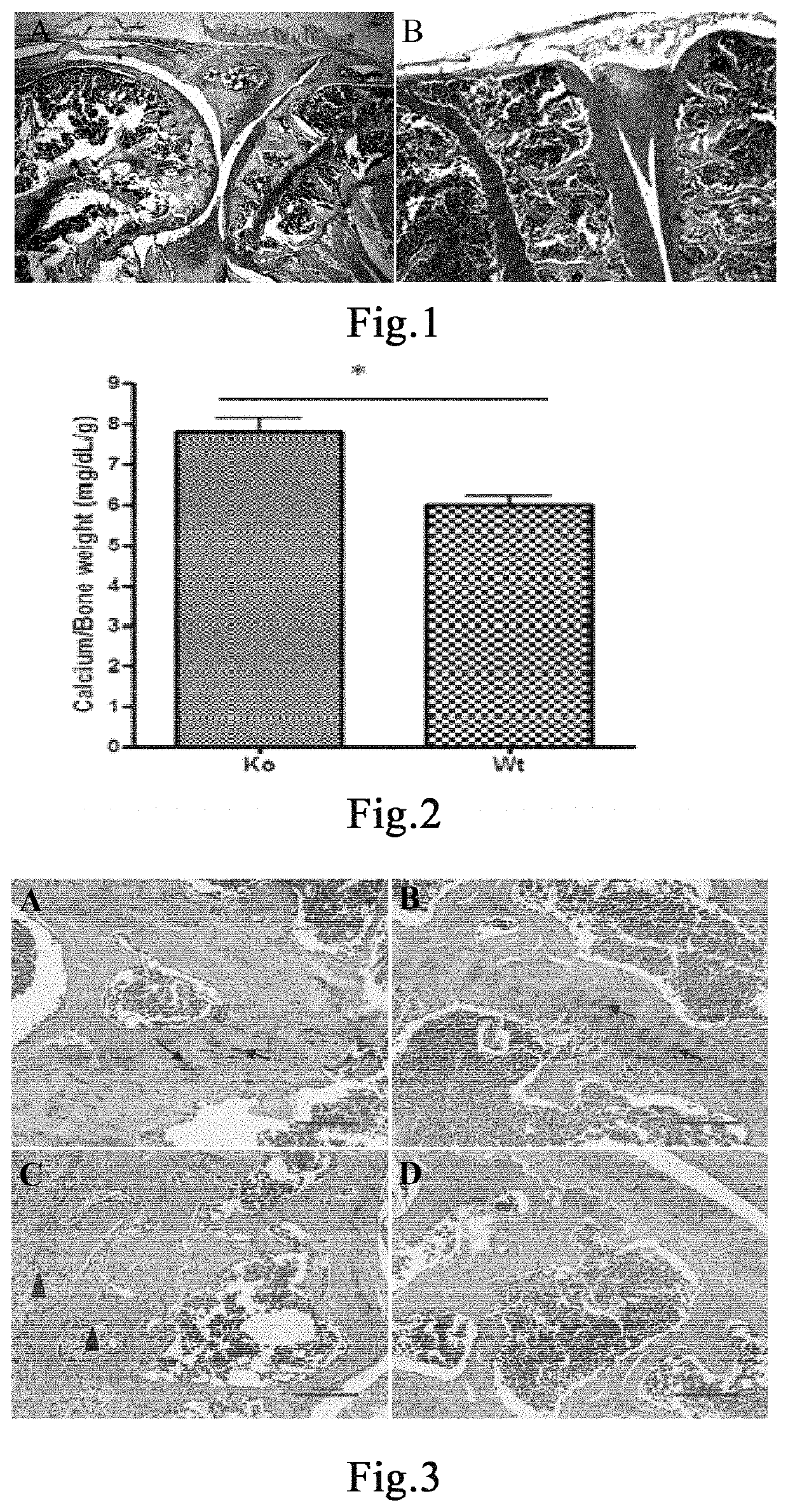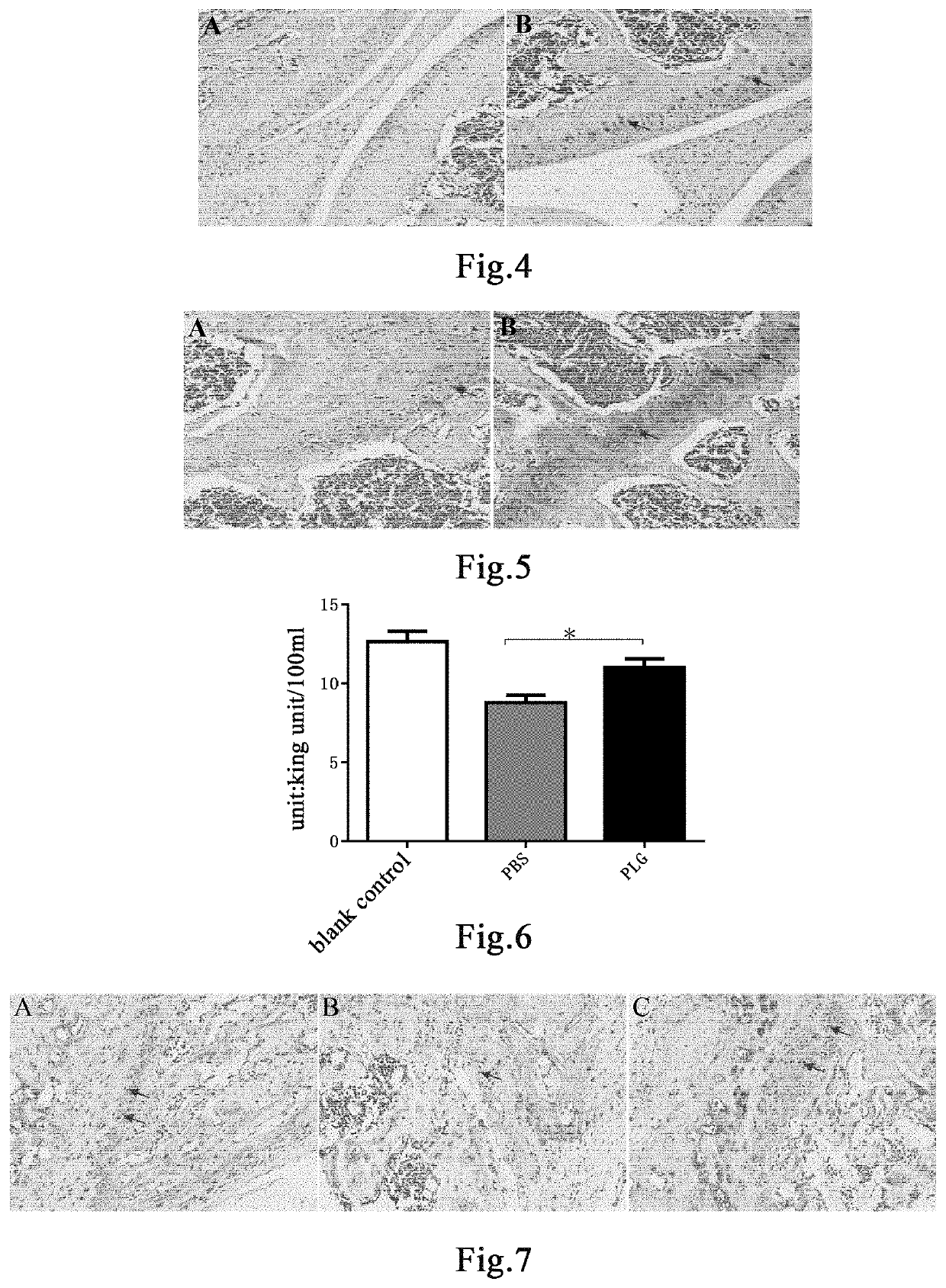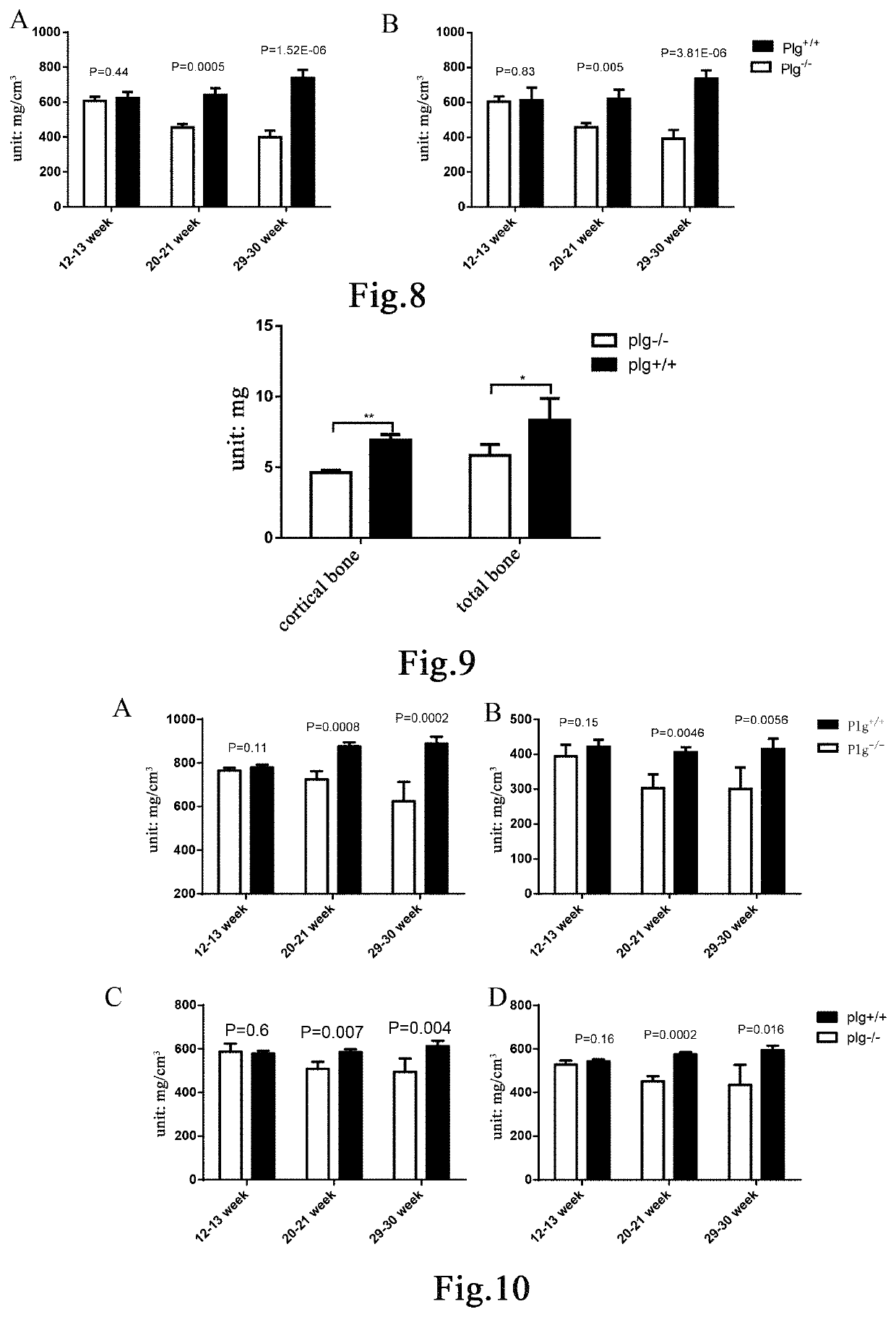Drug for preventing and treating osteoporosis and uses thereof
a technology of osteoporosis and drugs, applied in the field of plasminogen, can solve the problems of increasing the fragility of bones of patients, reducing the motor function and quality of life of patients, and high disability and mortality
- Summary
- Abstract
- Description
- Claims
- Application Information
AI Technical Summary
Benefits of technology
Problems solved by technology
Method used
Image
Examples
example 1
en Deficiency is Closely Related to Osteoporosis
[0152]15-week-old wild-type and plasminogen-deficient (Plg− / −) mice, five in each group, were used. Knee joints were taken and fixed in 4% paraformaldehyde for 24 hours, then decalcified in 10% EDTA for three weeks, and washed with a gradient sucrose solution. The above operations need to be carried out at 4° C. The materials were then embedded in paraffin, sectioned into 8 μm and stained with Safranin O. The sections were observed under an optical microscope at 200×.
[0153]The results showed that compared with the wild-type mice (FIG. 1A), the Plg− / − mice (FIG. 1B) exhibited extensive osteopenia and increased bone marrow cells.
example 2
n in Calcium Loss Between Wild-Type Mice and Plasminogen-Deficient Mice
[0154]15-week-old wild-type (wt) and plasminogen-deficient (ko) mice, five in each group, were used. Blood was taken from eyeballs removed from the two groups of mice to detect the blood calcium concentration. Under normal conditions, the calcium homeostasis in vivo is very precisely regulated. However, in the case of osteoporosis, calcium loss is a key marker of osteoporosis. In the study of calcium levels in wild-type and Plg− / − mice, we found that the Plg− / − (Ko) mice had significantly higher blood calcium levels at 15 weeks of age than the wild-type mice, and the statistical difference was significant (* indicates P<0.05) (FIG. 2).
Example 3. Protective Effect of Plasminogen on Knee Tissue Structure of Plg− / − Mice
[0155]Eight 20-week-old mice were randomly divided into two groups, i.e. a control group administered with vehicle PBS and a group administered with plasminogen, with 4 mice in each group. On the firs...
example 6
en Improves the Activity of Serum Alkaline Phosphatase in Vitamin D-Induced Ageing Model Mice
[0161]Twenty-five 5- to 6-week-old male C57 mice were taken, weighed and randomly divided into three groups, a blank control group of 5 mice, a group of 10 mice administered with plasminogen, and a control group of 10 mice administered with vehicle PBS. The mice in the blank control group were intraperitoneally injected with 50 μl of corn oil per day; and the mice in the group administered with plasminogen and in the group administered with vehicle PBS were intraperitoneally injected with vitamin D (Sigma Aldrich) at 0.5 μg / kg / day to induce senescence[34,35]. At the same time, the mice were administered in such a manner that the mice in the group administered with plasminogen were injected with human plasminogen at a dose of 1 mg / 0.1 mL / mouse / day via the tail vein, the mice in the control group administered with vehicle PBS were injected with an equal volume of PBS via the tail vein, and the...
PUM
| Property | Measurement | Unit |
|---|---|---|
| Fraction | aaaaa | aaaaa |
| Fraction | aaaaa | aaaaa |
| Fraction | aaaaa | aaaaa |
Abstract
Description
Claims
Application Information
 Login to View More
Login to View More - R&D
- Intellectual Property
- Life Sciences
- Materials
- Tech Scout
- Unparalleled Data Quality
- Higher Quality Content
- 60% Fewer Hallucinations
Browse by: Latest US Patents, China's latest patents, Technical Efficacy Thesaurus, Application Domain, Technology Topic, Popular Technical Reports.
© 2025 PatSnap. All rights reserved.Legal|Privacy policy|Modern Slavery Act Transparency Statement|Sitemap|About US| Contact US: help@patsnap.com



